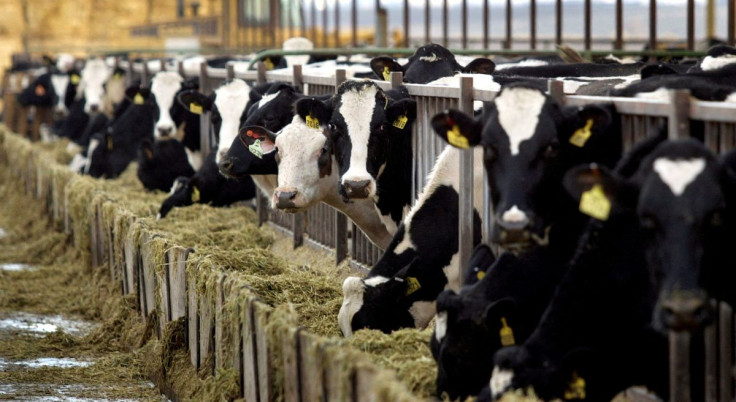German 'Poo-caso' Uses Feces To Make Elaborate Paintings: 'Doesn't Smell Anymore'

KEY POINTS
- A German painter found cow dung suitable for painting due to its adhesive and coloring properties
- Werner Härtl said he mixes the manure with water to achieve different shades
- Härtl said he is proud to use cow feces in his artworks since it is sustainable
An artist in Reichersbeuern, Germany, turns waste into gold as he uses cow dung to create elaborate paintings.
Werner Härtl, a 45-year-old German painter, began creating "poo-traits" 10 years ago after he noticed how hard it was to clean off cow manure from his barn.
Härtl told Caters News that he was impressed with the adhesive and coloring properties of cow dung.
"It has the perfect texture, because it's just fermented grass," Härtl said, according to The New York Post.
Härtl said he begins his process by taking the manure of his cows with a canister "as soon as they lift their tails."
"Around two bowel movements deliver enough for half a year of creativity," Härtl said.
Härtl would then dilute the cow dung with water to achieve different shades before painting it on canvas "using very dry, gentle brushstrokes."
To achieve lighter shades, the German artist would use more watered-down manure. He would use unmixed dung for dark shades.
As the drying times of the "paint" depend on the consistency of the dung, Härtl said he works in "layers."
But Härtl said the cow manure can be difficult to handle because "there are so many sticks, straws, clumps [and] even sand and insect particles in it."
The painter told Ripley's Believe It or Not! in 2022 that wet dung could be a "bit funky" to work with, but "when it's completely dry, it doesn't smell anymore."
Härtl told Bavaria Insider that he is proud to use cow dung in his "crappy" masterpieces since it is sustainable and "can be reused."
"I want to make people think and sensitize them to appreciate their environment more," Härtl said.
The German "Dung Vinci" has created over 1,000 paintings using excrement from his cows, and some of his artworks can be seen on his Instagram account.
Many of his paintings depict cows, but he has also painted a number of landscapes.
According to a study published in SpringerOpen, cow manure could be used to create biogas, a renewable energy source.
The study showed that the amount of manure generated from three to five cows and processed in a biogas plant would be able to light two lamps for three hours or run a refrigerator all day.
Cow dung could also be used as a fertilizer in agriculture. The study noted a marked increase in potato yield after using fertilizer mixed with animal manure.
However, improper handling of cow manure could harm human health, as pathogens such as Salmonella, listeria and E.coli are found in the excrement.
Weekand reported that parasites, roundworms and tapeworms have been linked to applications of uncomposted manure to gardens.

© Copyright IBTimes 2025. All rights reserved.






















